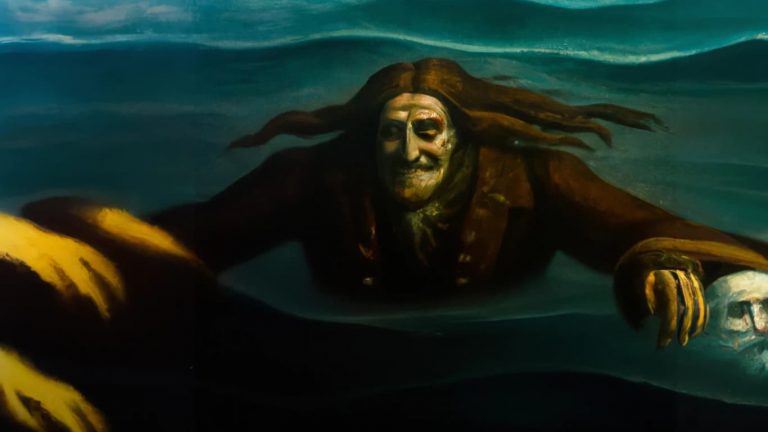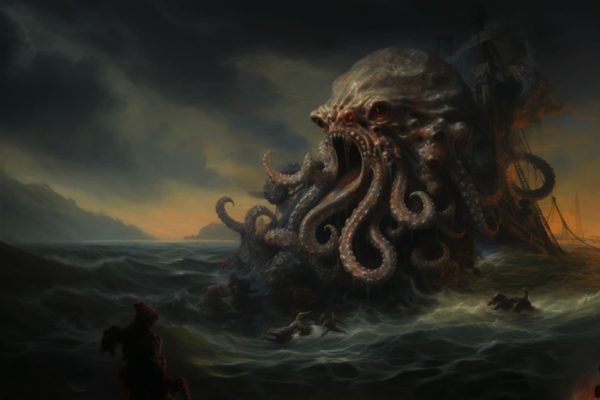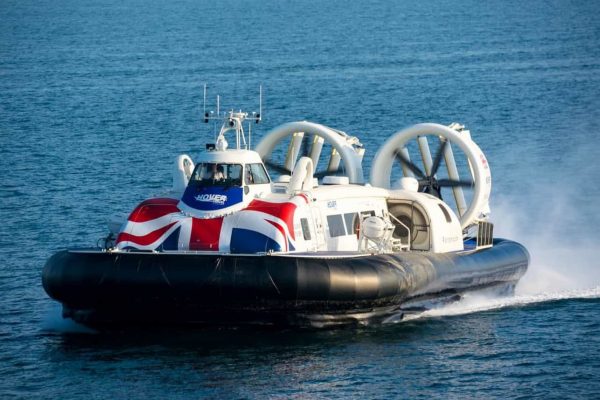Sailors tell tales that Davy Jones is a sea demon who drags sailors to the bottom of the sea and keep them there forever as punishment for their sins. The sailors that are doomed to spend eternity in Davy Jones’ locker are said to be doomed to a watery grave.
But where does the story of Davey Jones originate? And who, or what, was Davey Jones?
This article explores the Origins, Myths, and legends of Davey Jones and his ship, “The Flying Dutchman”.
What is Davy Jones’ Locker?
Davy Jones’ Locker is a nautical term that refers to the bottom of the sea, where all the drowned sailors and shipwrecks are said to go. It’s a metaphor for death or oblivion in the sea. It’s like the sailor’s version of heaven or hell, depending on how you look at it. It’s also sometimes referred to a state of death or oblivion. So, if someone says, “he’s gone to Davy Jones’ Locker,” it means he’s drowned or dead.

Where Does The Term Davey Jones Locker Come From?
The origins of the phrase are murky, but one popular theory is that it comes from the name of a real-life guy named Davy Jones. According to legend, he was a notorious pirate who terrorised the seas in the 17th century. He was so scared that sailors started calling the devil of the seas “Davy Jones.” Over time, the name became associated with the underwater world where shipwrecks and drowned sailors go.
While the origins of the phrase are uncertain, one popular theory is that it comes from a real-life pirate named Davy Jones, who was known for terrorising the seas in the 17th century.
Stories, Myths, and Legends About the Locker
Davey Jones has several famous stories, passed on through aural history, paintings, books, and movies.
In the Pirates of the Caribbean movies, Davy Jones is depicted as the captain of the Flying Dutchman, a ghost ship that sails the seas collecting souls of sailors who die at sea. He is also the main antagonist in the second and third films, seeking to gain control of the seas.
Davey Jones In Pop Culture
In recent pop culture, Davy Jones’ Locker is known as the place where the legendary pirate’s treasure is hidden. It’s also the name of the villainous pirate captain’s ship in the Pirates of the Caribbean movie series. So, whether you’re a seafaring sailor or a landlubber, Davy Jones’ Locker is a term that most people have heard of in one form or another.
Davey Jones In Art
In visual arts, the most notable representation of Davy Jones and the Flying Dutchman is found in J.M.W. Turner’s painting “The Fighting Temeraire” (1839), which depicts the Temeraire tugged to her last berth to be broken up.
Who Is Davey Jones?
One of the most popular stories about Davy Jones is that he was a real-life pirate who terrorised the seas in the 17th century. According to legend, he was so scary that sailors started calling the devil of the seas “Davy Jones.”
Is Davy Jones a Pirate Lord?
Davy Jones is depicted as a Pirate Lord in the Pirates of the Caribbean movie series. He is the captain of the ghost ship, the Flying Dutchman, and is responsible for collecting the souls of sailors who die at sea. He is also a member of the Brethren Court, a group of Pirate Lords who rule the seas. He is shown to have a special power to control the sea and is feared by all sailors. In the movie series, Davy Jones is also the main antagonist in the second and third films, seeking to gain control of the seas and defeat the other Pirate Lords. In this sense, he is a Pirate Lord, but in the original nautical references, there is no mention of him being a Pirate Lord.
How did Davy Jones become a squid?
In the Pirates of the Caribbean movie series, Davy Jones is depicted as a man who has been transformed into a monstrous creature with a human’s upper body and a giant squid’s lower body. This transformation results from a deal he made with the supernatural entity known as the “Kraken.” In the second movie, “Dead Man’s Chest,” it is revealed that Jones made a deal with the Kraken to raise his ship, the Flying Dutchman, from the depths of the sea, in exchange for his soul and his duty to collect souls of sailors who die at sea. As a result of this deal, Jones’ body is gradually consumed by the Kraken, turning him into a monstrous creature.
This idea of Davy Jones is a squid-like creature is specific to the Pirates of the Caribbean movies. It is not present in the traditional nautical references, myths or legends. The idea of a monstrous sea creature being associated with Davy Jones is a creative invention of the movie series. It is not based on any real-life historical figure or traditional nautical legend.
Who Has Played Davey Jones?
In the Pirates of the Caribbean movie series, Davy Jones is played by actor Bill Nighy. Nighy played the character in all three of the films in which the character appeared: “Dead Man’s Chest,” “At World’s End,” and “Dead Men Tell No Tales.”
In the first film, “The Curse of the Black Pearl,” Jones is played by actor Christopher Sommers in a brief appearance as a ghostly apparition.
In addition to the Pirates of the Caribbean series, there have been a few other notable representations of Davy Jones in theatre and film. For example, in the 1975 film “The Love Bug,” a racing car called “Herbie” is said to have been owned by Davy Jones and has a picture of him on the hood. In the “Monkey Island” video game series, Davy Jones appears as the main antagonist in several games. In the Broadway musical “The Little Mermaid,” Davy Jones is portrayed as the underwater kingdom’s ruler and Ursula’s father.
In all these representations, the character of Davy Jones is portrayed as a powerful and terrifying figure associated with the sea and often as a villain or antagonist.
How did Davy Jones Locker get its name?
One theory is that the name comes from the name of a real-life pirate named Davy Jones, who was said to be so terrifying that sailors began calling the devil of the sea “Davy Jones.” Another theory is that it is a reference to the biblical figure Jonah, who was thrown into the sea and swallowed by a giant fish.
Another possible explanation is that “Davy Jones” was a generic name for the devil of the sea, much like “Old Nick” is used as a generic name for the devil. The term “Davy Jones” may have been used to describe the devil of the sea, and his locker may have been used to describe the place where drowned sailors went.
Another theory states that the name is derived from “Duff Jones”, a nickname for a ghost or demon among the sailors in the 17th century, “Duff” is a nickname for “Daphne” which was a name for the Greek god of the sea, Poseidon.
It’s important to note that the phrase “Davy Jones’ Locker” is a nautical term that has been in use since at least the 18th century, but the true origin of the phrase is uncertain and lost in time.
What was Davy Jones’ Ship Named?
In the Pirates of the Caribbean movie series, Davy Jones is the captain of a ghost ship called the Flying Dutchman. The ship is said to be cursed and can only be seen by sailors who are doomed to die at sea. Jones is bound to the ship and must captain it for all eternity, collecting the souls of sailors who die at sea. The ship is also depicted as having supernatural powers, such as being able to sail underwater and appearing out of nowhere in the middle of a storm. The Flying Dutchman is portrayed as a formidable and terrifying vessel with a crew of undead sailors and a fearsome appearance.
It is worth noting that the name of the ship, “The Flying Dutchman”, was based on a real-life nautical legend which is a ghost ship that can never make port and is doomed to sail the oceans forever. The legend of the Flying Dutchman, which has been around since the 18th century, predates the Pirates of the Caribbean franchise, and the name was used in the movie as a reference to the nautical legend.

Where Did the Name “The Flying Dutchman” Come From?
The name “The Flying Dutchman” comes from an old nautical legend dating back to the 18th century. According to the legend, the Flying Dutchman is a ghost ship cursed to sail the seas forever, never able to make port. The ship is said to be captained by a ghostly figure, often referred to as the “Flying Dutchman” or simply “the Dutchman.”
The legend’s origins are uncertain, but it is believed to have originated from the seafaring tales of sailors from the Netherlands, who were known for their skill and bravery at sea. The name “Flying Dutchman” refers to the Dutch navy’s fast-sailing ships, which were said to be able to “fly” across the seas.
The legend of the Flying Dutchman was popularised in literature and art in the 19th century. It was referenced in a poem by Samuel Taylor Coleridge and later by Richard Wagner in his opera “The Flying Dutchman.” The legend has also been featured in several films, including the Pirates of the Caribbean series, as well as in video games and other works of popular culture.
It’s also worth noting that there are different versions of the legend, but the overall concept of a ghost ship captained by a ghostly figure doomed to sail the seas forever is shared among all of them.
Why did Davy Jones’ Crew Abord the Flying Dutchman turn into Fish?
In the Pirates of the Caribbean movie series, Davy Jones’ crew aboard the Flying Dutchman are depicted as having been transformed into fish-like creatures due to a curse placed on them by Jones. The curse is a punishment for cowardice and desertion, as they failed to fulfil their duties and deserted Jones during a battle. As a result of the curse, they are doomed to serve Jones and the Flying Dutchman for all eternity, with their human form being replaced by fish-like creatures.
This concept of the crew being transformed into fish-like creatures is a fictional portrayal in the Pirates of the Caribbean movie series. It is not based on any historical or nautical legends. The movie’s creators came up with this idea to create a unique and fantastical appearance for the crew of the Flying Dutchman and add a sense of terror and otherworldliness to the ship and its crew.




